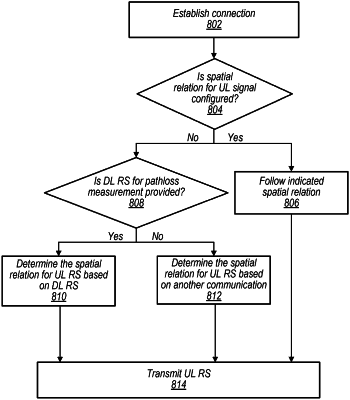| CPC H04W 52/08 (2013.01) [H04W 52/146 (2013.01); H04W 52/242 (2013.01); H04W 52/367 (2013.01)] | 20 Claims |

|
1. An apparatus, comprising:
a processor configured to cause a user equipment device (UE) to:
establish a connection with a cellular network;
determine that a spatial filter for an uplink signal is not configured by the cellular network;
determine that downlink reference signals for pathloss are not provided by the cellular network;
in response to the determinations that the spatial filter for the uplink signal is not configured and that downlink reference signals for pathloss are not provided, select a particular spatial filter for the uplink signal based on a beam used for a second communication; and
transmit the uplink signal using the particular spatial filter.
|